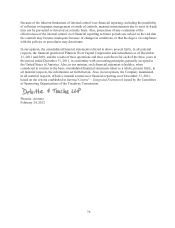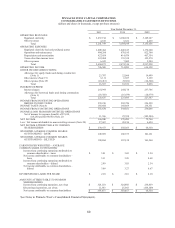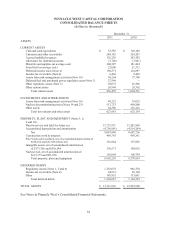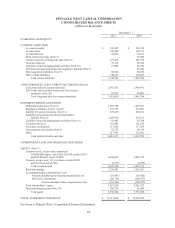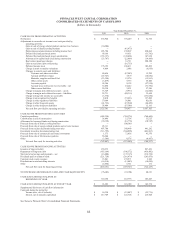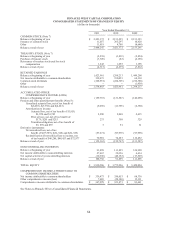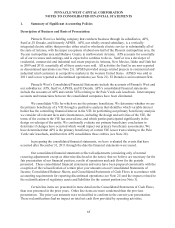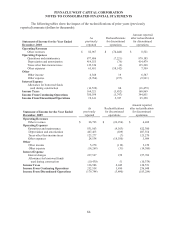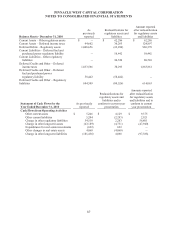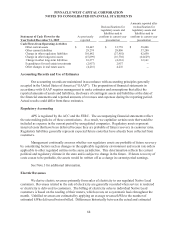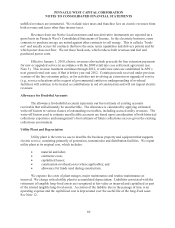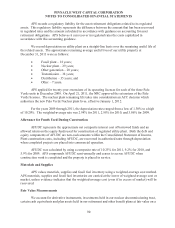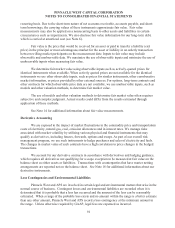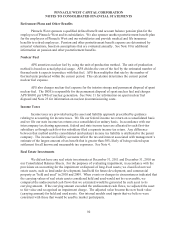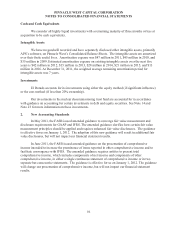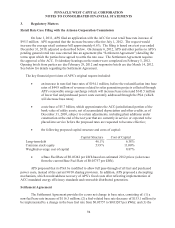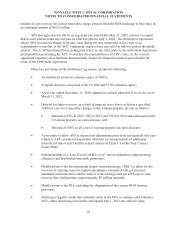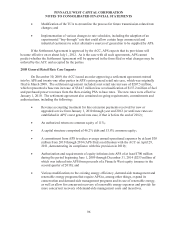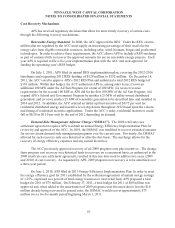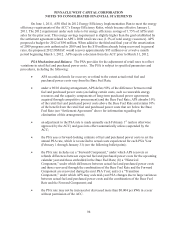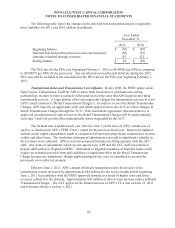APS 2011 Annual Report Download - page 114
Download and view the complete annual report
Please find page 114 of the 2011 APS annual report below. You can navigate through the pages in the report by either clicking on the pages listed below, or by using the keyword search tool below to find specific information within the annual report.PINNACLE WEST CAPITAL CORPORATION
NOTES TO CONSOLIDATED FINANCIAL STATEMENTS
89
unbilled revenues are immaterial. We exclude sales taxes and franchise fees on electric revenues from
both revenue and taxes other than income taxes.
Revenues from our Native Load customers and non-derivative instruments are reported on a
gross basis on Pinnacle West’s Consolidated Statements of Income. In the electricity business, some
contracts to purchase energy are netted against other contracts to sell energy. This is called a “book-
out” and usually occurs for contracts that have the same terms (quantities and delivery points) and for
which power does not flow. We net these book-outs, which reduces both revenues and fuel and
purchased power costs.
Effective January 1, 2010, electric revenues also include proceeds for line extension payments
for new or upgraded service in accordance with the 2009 retail rate case settlement agreement (see
Note 3). This revenue treatment continues through 2012, or until new rates are established in APS’s
next general retail rate case, if that is before year end 2012. Certain proceeds received under previous
versions of the line extension policy, or for activities not involving an extension or upgrade of service
(e.g., service relocations at the request of governmental entities or undergrounding of overhead
facilities) will continue to be treated as contributions in aid of construction and will not impact electric
revenues.
Allowance for Doubtful Accounts
The allowance for doubtful accounts represents our best estimate of existing accounts
receivable that will ultimately be uncollectible. The allowance is calculated by applying estimated
write-off factors to various classes of outstanding receivables, including accrued utility revenues. The
write-off factors used to estimate uncollectible accounts are based upon consideration of both historical
collections experience and management’s best estimate of future collections success given the existing
collections environment.
Utility Plant and Depreciation
Utility plant is the term we use to describe the business property and equipment that supports
electric service, consisting primarily of generation, transmission and distribution facilities. We report
utility plant at its original cost, which includes:
material and labor;
contractor costs;
capitalized leases;
construction overhead costs (where applicable); and
allowance for funds used during construction.
We expense the costs of plant outages, major maintenance and routine maintenance as
incurred. We charge retired utility plant to accumulated depreciation. Liabilities associated with the
retirement of tangible long-lived assets are recognized at fair value as incurred and capitalized as part
of the related tangible long-lived assets. Accretion of the liability due to the passage of time is an
operating expense and the capitalized cost is depreciated over the useful life of the long-lived asset.
See Note 12.


